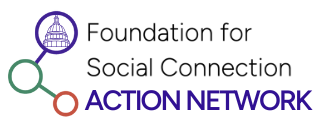I am a Geriatrician and palliative medicine physician who became interested in the health effects of loneliness over a decade ago when I was a young medical resident. At that time, I was most interested in understanding what factors led to my patients’ loss of independence, or need to move from independent living to congregate living. During my residency, discussions about the impact of loneliness and isolation on our patients’ lives were largely absent in medical education and clinical practice. Little did I know, my simple question about loss of independence and changes in living environments would start me on the path of recognizing that loneliness and social isolation not only affect our health, but ultimately contribute to death. These facts have become more well known since seeing the COVID-19 pandemic directly affect our patients, members of our families, and our communities.
Despite what we have seen before our eyes, I have wondered how much death statistics truly capture the deaths caused directly or indirectly by social isolation and loneliness. This led me to write about our understanding of death certificates, and how as physicians we sometimes struggle to complete these. In my own practice, it was not until a few months ago, that for the first time, I listed social isolation as a contributing cause of death. I realized that prior to this, I was not doing justice to my patients and the life circumstances that contributed to their death.
For those of us who either research social isolation and loneliness, experience it directly, or work on interventions, the fact that any type of social disconnection contributes to hastened death is not surprising. What is surprising is how little public funding we dedicate to these issues given the magnitude of their health effects and costs to our country in both dollars and in quality of life. Instead, public health dollars are tied to the things that most contribute to morbidity and mortality. If we don’t document this correctly, how will social isolation and loneliness receive the attention and funding it deserves?
We must be forward thinking and work collectively and systematically to understand how to impact social isolation and loneliness, and this will involve multiple steps. From a public health perspective, we must think about primary prevention and focus on children and young adults—lets prevent social isolation and loneliness from occurring. To accomplish this, we must look across sectors using a socioecological framework—look for our forthcoming reports which provide insight on a cross-sector investigation of social isolation and loneliness. For secondary and tertiary prevention—if social isolation and loneliness has set in, let’s create, study and offer interventions that actually work, are financially accessible to all, and are considered a health benefit. Lastly, if someone unfortunately dies with concurrent social isolation and loneliness, we must properly recognize this, document social isolation appropriately on death certificates, and ensure that these topics receive the proper attention and funding.

